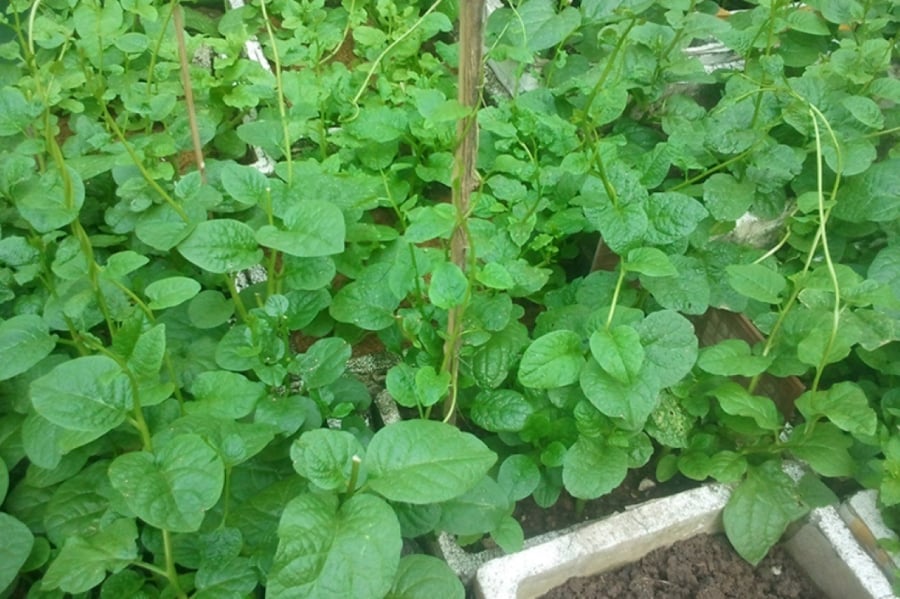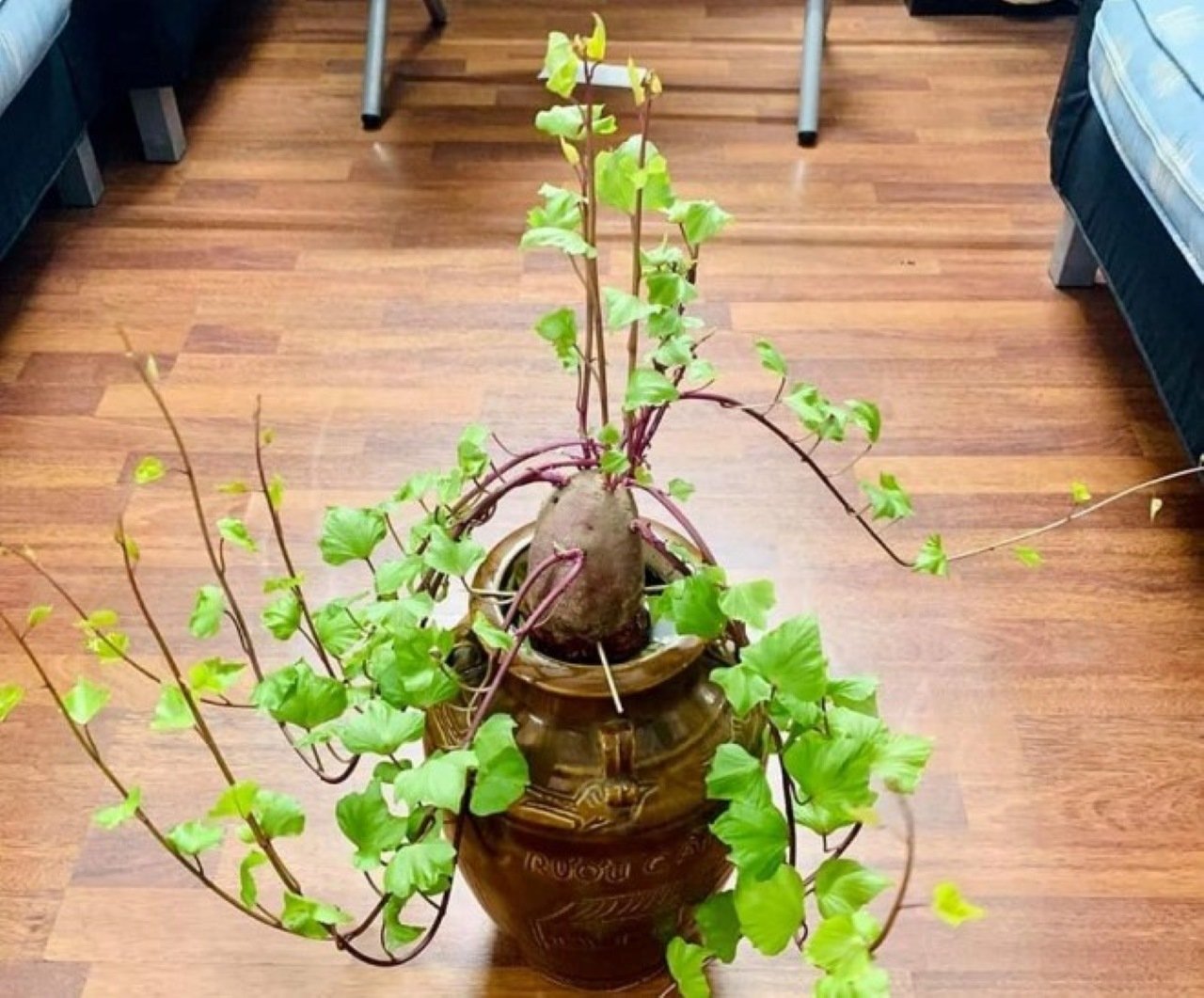1. Water Spinach
Water spinach is a vegetable commonly grown in tropical regions, especially in moist areas. For this reason, it is easy to learn how to grow water spinach, especially during hot summers. Water spinach is a climbing vine.

Water spinach can grow long on balconies
Water spinach thrives best when exposed to ample sunlight (during summer). However, it is important to frequently moisturize the soil for optimal growth. The ideal soil pH level is between 6.5 and 6.8. If the soil dries out, the plant will flower, and its leaves will taste bitter.
Water spinach is typically grown from seeds (although it is possible to propagate it through cuttings, this method is not recommended).
Before sowing, moisten the soil by watering it thoroughly. Maintain a distance of 6-7 cm between rows and 3-4 cm between plants. Under favorable conditions, the seeds will germinate within a week of sowing.
To accelerate the growth of your water spinach seeds, soak them in warm water for 24 hours before planting.
Regular watering is essential when growing water spinach during the hot summer months. However, during the rainy season, reduce the frequency of watering.
2. Water Morning Glory
Water morning glory, or water spinach, is a green vegetable that we often consume in our daily meals. It is highly nutritious and can be easily grown at home, eliminating the need to purchase it from the market.

Water Morning Glory Vine
There are two simple methods to grow water morning glory. The first is to sow seeds, which can be expedited by soaking them for a day or two before planting, stimulating quicker germination.
Alternatively, you can directly plant cuttings from leftover water morning glory stems into moist soil or water. These cuttings will develop roots and sprout, and with regular watering and fertilization, they will thrive and climb like a curtain, providing multiple harvests.
3. Sweet Potato Greens
Sweet potato vines are popular houseplants, adding a touch of elegance to indoor spaces, desks, and balconies alike.
Growing sweet potato greens is straightforward. Start by thoroughly cleaning a sweet potato and piercing it with three evenly spaced toothpicks at the center. Then, place the potato in a glass of water, ensuring half of it is submerged while the other half remains dry.

Sweet Potato Greens
Position the glass in a spot that receives indirect sunlight and water the potato once a day to maintain moisture. Within a week, the potato will start to sprout, and you’ll notice young leaves appearing after about two weeks.
If you prefer to grow sweet potatoes hydroponically, leave the setup as it is. After a month, the plant will have lush foliage. If you wish to transfer the sweet potato to a pot of soil, carefully separate the sprouts and roots from the potato when the seedlings have young leaves and a few roots.



































